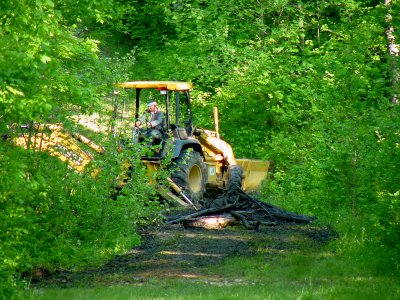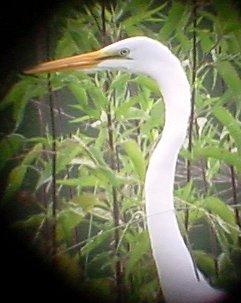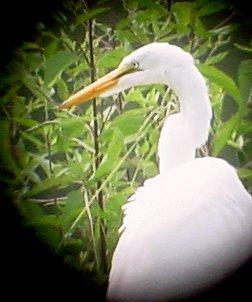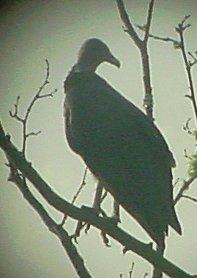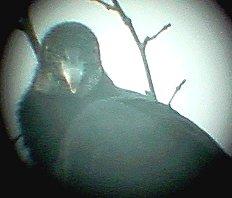
Over the weekend, local bike shop and cycling club Ride Studio Cafe hosted a group ride followed by a Brevet Season Kick-Off Party that lasted well into the night. Organised by the RSC and cycling legends The Blayleys, this event included food, drink, a bike show, and an information session about various aspects of randonneuring.
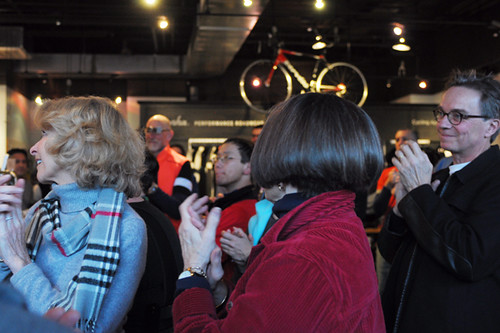
This event struck me as significant on a number of levels. It was a coming together of the worlds of road racing, randonneuring and casual cycling, which rarely happens in other communities. It also showed just how much local interest there is in randonneuring. The room was absolutely packed and by the time things got started it was almost impossible to move. No one expected such a turnout.

Though many beautiful and unusual bicycles were brought in for the bike show and contest, it was impossible to photograph them due to their sheer proximity to one another. Frames bearing the marks of Weigle, Vanilla, ANT, Rawland, Rivendell, Sketchy, Gunnar and Seven were a common sight, as were refurbished vintage mystery frames. The glitter of hammered fenders set the room aglow. Saddlebags swayed to the soft French music that played in the background. Map sleeves glistened. Leather saddles of at least 4 different makes flaunted their rivets and cut-outs.Light and heavy, racy and sedate, with integrated lighting and without, rando bikes filled the entire room and spilled outside. Waist-deep in a sea of lovely bikes, yet unable to photograph them... oh how I suffered! The winners of the bike contest were a stunningly crafted JP Weigle, a refurbished vintage Raleigh, and a customised Seven rando bike (this one).
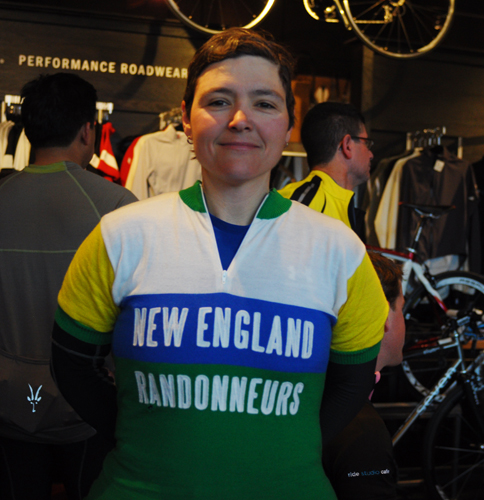
Last year it took me a while to understand what randonneuring really was, and I suspect many readers might like to have it explained. French in origin, randonneuring is defined as a "noncompetitive, timed, endurance cycling sport." It involves riding in organised long distance events, with the goal to finish within a specific time frame. The rides are unsupported (no van with supplies and mechanical help to follow riders around) and take place regardless of weather conditions. Control points along the way ensure participants cover the entire route.
Official randonneuring events (aka randonnées) are sanctioned internationally by the Audax Club Parisien and in the US by Randonneurs USA. Our local organisation here in Boston isthe New England Randonneurs (NER).
The shortest type ofrandonnée (petiterandonnée?)is called the Populaire, and it is 100km - a metric century. But the prototypical randonnées are the brevets - rides 200km or longer. Local organisations will usually host a brevet series starting in spring, consisting of 200km, 300km, 400km and 600km rides spread out through the season. Hence, the Brevet Season.
Other types ofrandonnéesinclude the Flèche (a 24 hour team event, described very nicely here), and the so-called granderandonnées, the most famous of which is the 1200km Paris-Brest-Paris(for some time there was a local granderandonnéeBoston-Montreal-Boston, but sadly it appears to have been discontinued). The schedule for all the local randonnées this season is postedhere.

A number of well known local randonneurs attended the Brevet Kick-Off Party, and it was a pleasure to see them in person.

It was particularly excited to spot Emily O'Brien - a woman known for riding long distance on fixed gear, eating pickles, and making custom bicycle bags named after pickles.
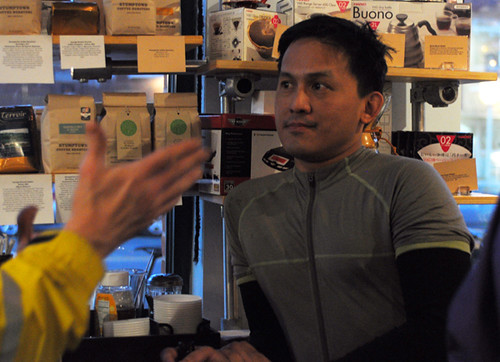
I also finally met a few people whom I'd previously only corresponded with - including Cris C., who arrived on his well-loved ANT.
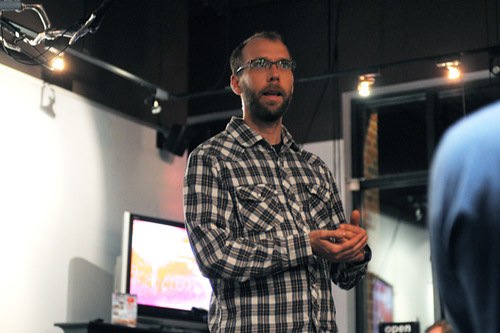
Presentations were given byMelinda Lyon of the New England Randonneurs, Pamela Blalock, andMatt Roy of MM Racing. Matt was at a disadvantage in that he went on last and it was already quite late. But I am so glad I stayed for his presentation, because he is an extremely engaging and charismatic speaker. At 10pm, Matt's talk made me want to immediately get up and ride a few hundred miles - whilst meticulously following his instructions of course.

While I find the idea of randonneuring exciting and romantic, I doubt that I can actually do it. The routes are hilly and challenging, and the people who do these things are extremely strong riders, no matter how much they might downplay it in conversation. Randonneurs tend to make a point of being inclusive and assuring others that "anyone can do it," and they honestly believe it. They also have a habit of describing rides in a way that makes it seem all about the scenery and camaraderie, conveniently leaving out the part about it being difficult! But in fact it is very difficult, and I am not a sufficiently strong cyclist at this stage. It is also a must that participants be able to fix their own mechanical problems, since there is no support. While I have the know-how, I cannot physically work on my bike and that presents a problem. Finally - and I hate to say this, but it's true - I am simply not committed enough. Though I ride a lot, I do it on my own time instead of planning my life around rides that take place on specific dates. When push comes to shove, personal things have priority and in the past it has been very difficult for me to commit to organised cycling events. For serious randonneurs, their lives basically revolve around the brevet season, as a great deal of commitment is required to both take part in and train for the events.
Some day I would like to take part in a brevet (or a flèche - those sound like so much fun!)
, and I certainly do not mean to discourage others from doing it. It's just that there has been such a tendency to romanticise randonneuring and to contrast it with racing, that the popular image of the activity does not, in my opinion, adequately reflect how challenging and demanding it actually is. It's good to go into something with realistic expectations.
As you can see, the Brevet Season Kick-Off Event has given me a lot to think about. More than anything, I am still overwhelmed by how significant it felt to be there. We could practically feel a new era dawning as more and more people filled the room (several of us mentioned that independently so I know it wasn't just my overactive imagination!). While it doesn't mean that the local population will now rush
en masse to join the New England Randonneurs (though it's a great idea to support them), I do think it's indicative of a growing interest in a particular type of cycling: long rides on bikes that are fast yet practical, and without an overt competitive element. It's the kind of cycling I like best so far, and I appreciate that it is so well supported locally. More low-light pictures of the event here!


 May 1979. I can still feel the freezing cold of the water as I walked through the stream to the dunes. The warmth of the sun and the chill of the morning breeze. The quietness broken only by the occasional laughter and voices of other visitors. It was a time of change. One stage of life ending and another beginning. A return to civilian life after 9 1/2 years in the Navy.
May 1979. I can still feel the freezing cold of the water as I walked through the stream to the dunes. The warmth of the sun and the chill of the morning breeze. The quietness broken only by the occasional laughter and voices of other visitors. It was a time of change. One stage of life ending and another beginning. A return to civilian life after 9 1/2 years in the Navy.
































 With the dark clouds came strong winds, rain and snow.
With the dark clouds came strong winds, rain and snow. A close-up view of the mountains beneath those big gray clouds. This particular storm passed by quickly. But other storms and more wind came again during the night. It was a very restless night!
A close-up view of the mountains beneath those big gray clouds. This particular storm passed by quickly. But other storms and more wind came again during the night. It was a very restless night! In the morning we were greeted with sunshine, blue skies, and somewhat cooler temperatures. As I headed a few miles south toward Willcox and Chiricahua, I wondered what more Mother Nature could bring my way.
In the morning we were greeted with sunshine, blue skies, and somewhat cooler temperatures. As I headed a few miles south toward Willcox and Chiricahua, I wondered what more Mother Nature could bring my way.






